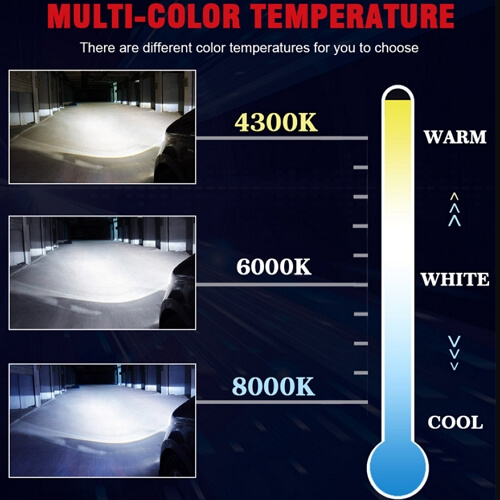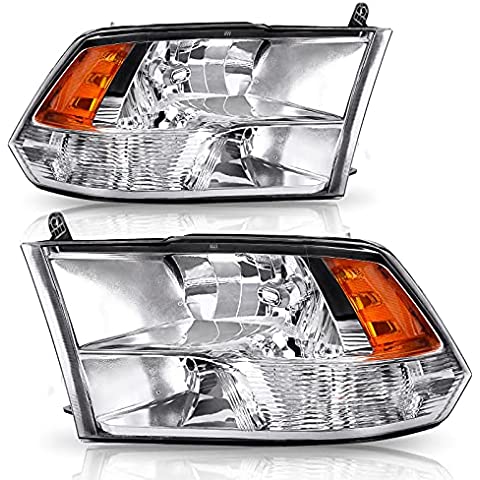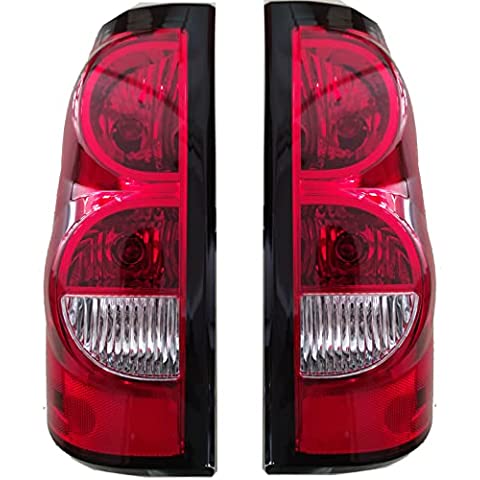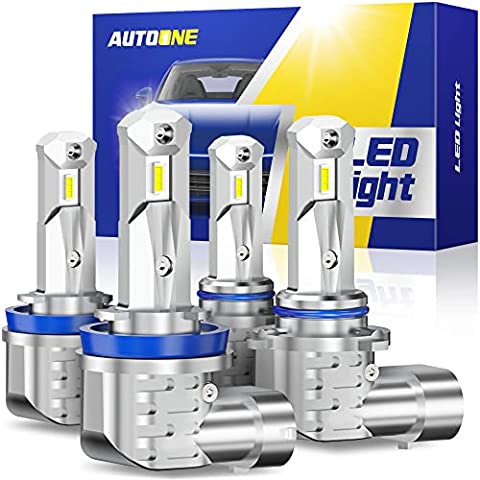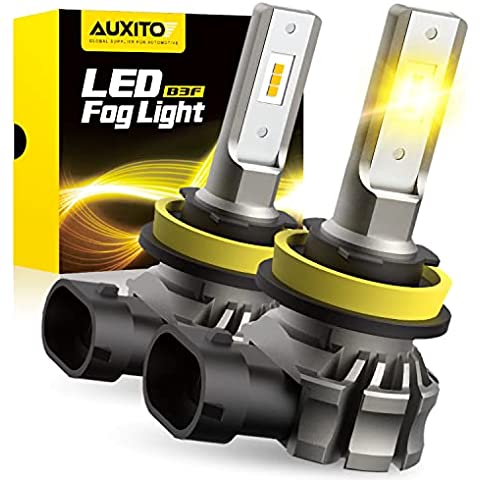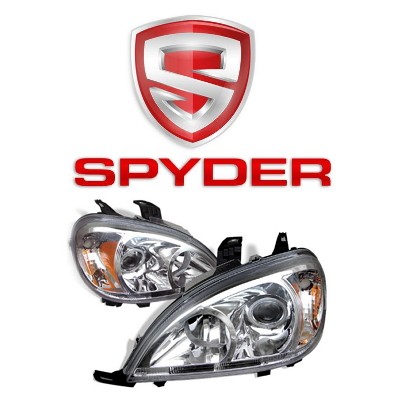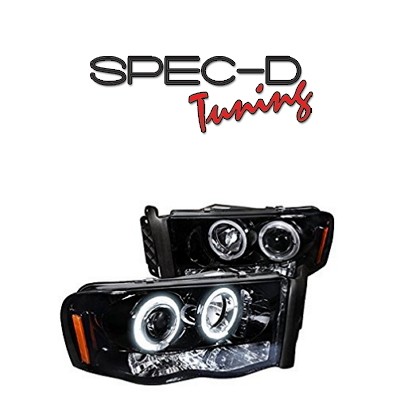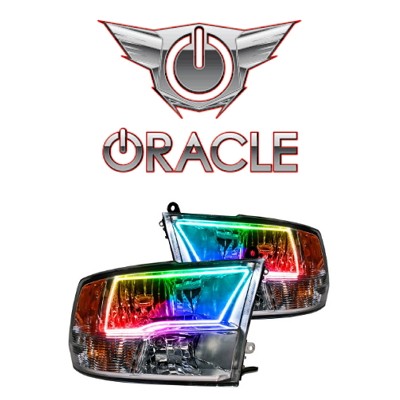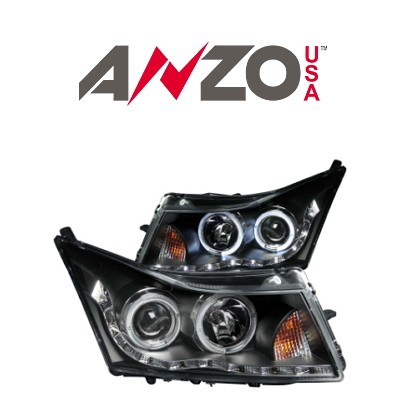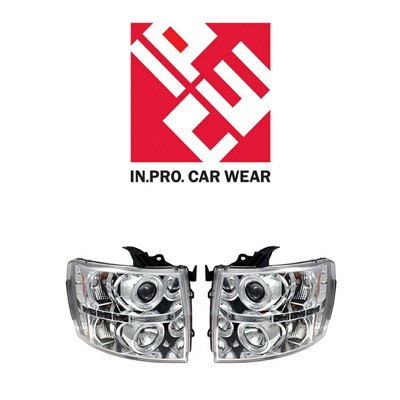Illuminating the Way: Decoding the 3000K vs. 6500K vs. 8000K Spectrum for Night Driving
Cheers, fellow automotive enthusiasts! Today, let’s embark on a quest to unravel the mysteries of color temperatures in car headlight bulbs, specifically 3000K, 6500K, and 8000K. Some gurus in the industry swear by the 3000K bulbs, while others are adamant that 6500K is the ultimate choice for nocturnal travels.
Products are available — click below to view them!
SEE DETAILS ON EBAYIf you’re pondering which hue is ideal for your night-time cruising, let’s pop the hood on the main objectives behind these color variants and the roles they play. Without further ado, let’s hit the ignition on the differences and similarities between these three Kelvin ratings and steer you toward the most radiant choice for your ride!
Decoding the Color Temperature Spectrum
- 3000K, 6500K, and 8000K signify color temperatures, gauged in Kelvins (K). These figures are unrelated to heat – no, higher color temperatures don’t imply sizzling bulbs!
- Don’t mistake higher color temperature for increased luminosity. Identical power and voltage bulbs can have varying brightness due to an array of contributing elements.
- The color temperature range spans from a blue to a yellow spectrum, which translates to cool and warm hues for the human eye.
The Common Ground Between 3000K, 6500K, and 8000K
The “K” in the figures stands for Kelvin, which is a temperature scale. Headlights with 3000K, 6500K, or 8000K can be powered by halogen, HID, or LED and share similar brightness and range when operating at the same power levels. Now, fasten your seatbelts as we cruise into the differences!
Distinguishing the Trio: 3000K vs. 6500K vs. 8000K
Headlight Color Temperature Showdown
3000K bulbs radiate a golden glow reminiscent of a cozy sunset. They’re adept at piercing through adverse weather conditions such as rain, fog, or snow, with halogen variants typically emitting a gentle yellowish hue around 3000K-3200K.
6500K bulbs, in contrast, project a crisp white light with a dash of blue, while 8000K goes full ice-blue. Most LED bulbs don the 6500K attire, closely resembling natural daylight, making them more prominent than the 8000K siblings.
| 3000K | 6500K | 8000K | |
|---|---|---|---|
| Color | Yellow | Cool White | Ice Blue |
| Comparable light | The light is close to evening sunset | The light is similar to midday daylight | It looks like the shade on a clear day |
| Bulb type | Halogen headlight | LED headlight | HID headlight |
| Explanation | 3000K yellowish bulbs may be used in fog lights. They have strong penetration on foggy and rainy days and are deemed to be more visible in rough weather. | This cool white color provides excellent on-road visibility as well as stylish aftermarket looks. It differs from 3000K and 8000K car light bulbs. It offers more conspirous light when compared to others. | 8000K car light bulbs are good for aesthetics because they are at the expense of brightness. They offer a powerful light-blue beam, which is only slightly brighter, than halogen. |
| Application | interior/exterior | interior/exterior | exterior (off-road) |
Here is an interesting study regarding the headlights’ color temperature. This study proposed a method for evaluating visibility in bad weather at night related to color temperature convertible headlamps. In particular, the method proposed in this study can be said to be a method of relative comparison of visibility by comparing the contrast ratio according to the color temperature of 3000 K and 6000 K using pedestrian targets in a facility that can realize bad weather conditions at night. Through this, weather conditions such as fog and rain and the distance of the pedestrian target were suggested and actual tests could be carried out. Source: MDPI.
Brightness Decoded
In the luminosity battle, 6500K claims victory. While the color temperature does not dictate brightness, the cooler 6500K light creates higher contrast, making it appear brighter.
You might wonder, “Why isn’t 8000K brighter?” Well, as Kelvin’s ratings rise, colors intensify but at the expense of visibility. 6500K strikes the balance, mimicking daylight, and is perfect for night driving. Conversely, 8000K and beyond lean towards the blue spectrum, leading to reduced light output and road-legality issues, thereby shrinking demand.
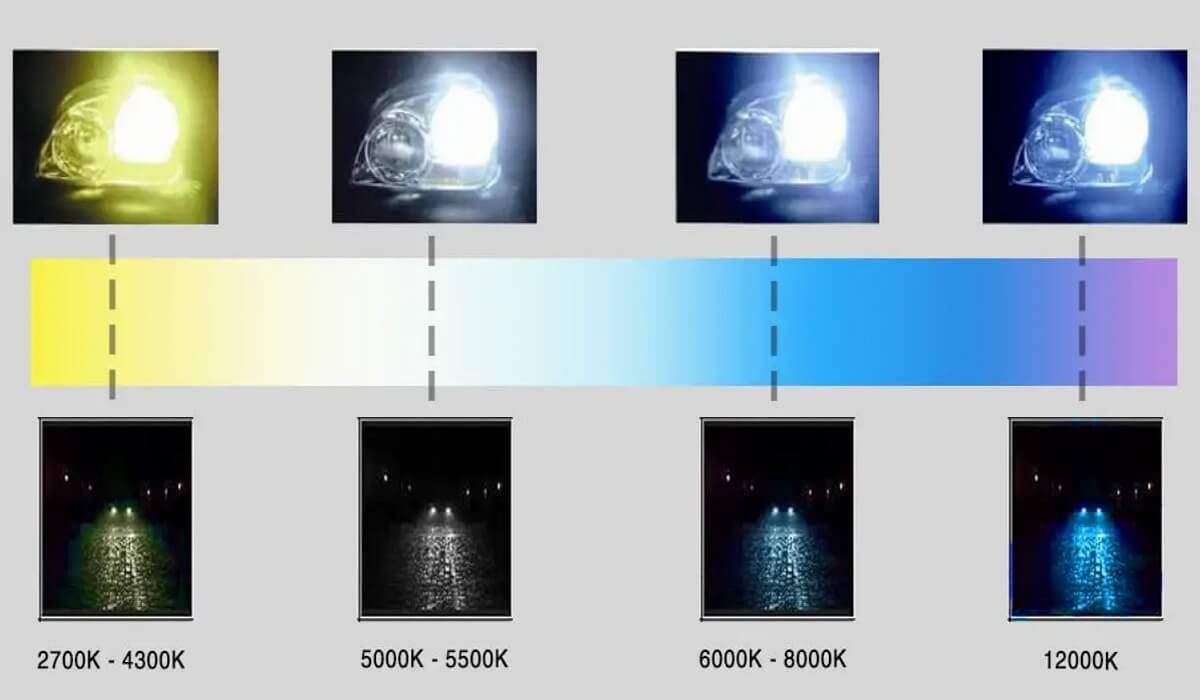
Unraveling the Popularity of 6500K LEDs
- Prime Visibility with 6500K. With sunlight clocking in at 5800K, 6500K is a tad cooler but virtually identical to our eyes. Cruising with 6500K LED headlights ensures impeccable visibility and an invigorating driving experience.
- Manufacturing Efficiency in 6500K LEDs. 6500K achieves harmony between production costs and performance. LED chips employ red/green phosphor coatings activated by blue light to create white light. Tweaking coating concentrations yields different hues. 6500K has a more balanced coating, making its production more economical compared to 3000K.
Spotlight on the Sealight X4 H7 LED Bulb [6500K Cool White]
The Sealight X4 H7 LED bulb is a beacon of brilliance in automotive lighting. Emitting a natural, 6500K daylight-esque light, this bulb is designed with cutting-edge chip technology, delivering a whopping 50W and 6000 lumens, a staggering 300% brighter than traditional halogen headlights.
Sealight X4 ensures you never settle for subpar visibility. Complying with optical standards, this bulb produces a distinguished and intensely luminous beam pattern.
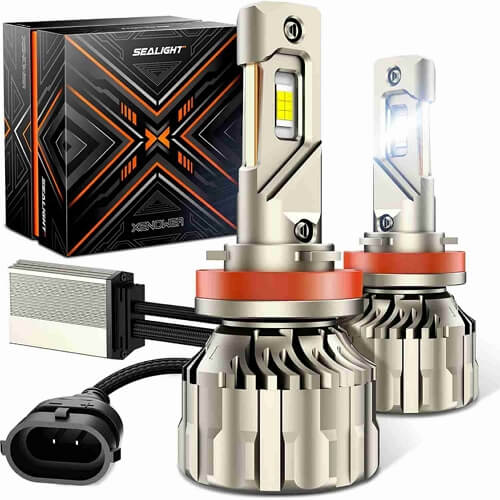
Specifications:
- Power: 50W 6000LM (per bulb)
- Color: 6500K white
- Waterproof: IP67
- Voltage: DC9-12V
- Installation: Plug and play
- Lifespan: up to 50,000 hours
- Operating temperature: -45℃- +150℃
- Warranty: one year
Exceptional Features
- Impeccable Light Beam Pattern. Sealight X4 delivers consistent performance and impressive brightness without dark spots. Engineered to perfection, these bulbs provide a broader and longer beam, sans blinding fellow road users.
- Intelligent CanBus Driver. European vehicles often have sensors to detect headlight function. LEDs draw less power than halogens, potentially triggering error messages. Sealight X4’s intelligent driver mimics the power draw of halogen bulbs, preventing error notifications.
- Simple Installation. Installation is a breeze with plug-and-play functionality.
Cheers to your enlightened night-time travels! 🚗💡
 Steven is a certified mechanic and technical writer at Halo Headlights. Steven is excited about fast cars, loud music, and car mods. On a yearly basis, he visits SEMA, as well as other car shows.
Steven is a certified mechanic and technical writer at Halo Headlights. Steven is excited about fast cars, loud music, and car mods. On a yearly basis, he visits SEMA, as well as other car shows.
He has installed thousands of HID and LED kits and done hundreds of custom headlight retrofit projects. Now, he is ready to share his experience with Halo-Headlights.com readers.
Questions and Answers
Q: What does the “K” in 3000K, 6500K, and 8000K stand for?
A: The “K” stands for Kelvins, which is a unit of measurement for temperature. However, in the context of lighting, it represents the color temperature of the bulb, indicating the hue of the light emitted. It’s crucial not to confuse this with the physical temperature or heat of the bulb.
Q: Why would someone choose a 3000K bulb over 6500K or 8000K for night driving?
A: A 3000K bulb emits a yellowish light that is excellent for penetrating fog, rain, and snow. Its wavelength is longer and is less scattered by small particles in the atmosphere, offering better visibility in adverse weather conditions compared to the bluish light emitted by higher Kelvin bulbs.
Q: Is a higher color temperature better for general night driving?
A: Not necessarily. While higher color temperatures like 6500K approximate daylight and are often considered good for night driving, going too high (like 8000K) shifts the light towards the blue spectrum which can be less effective for illumination and potentially more dazzling to other drivers.
Q: Does a higher color temperature mean the bulb is brighter?
A: No, the color temperature doesn’t equate to brightness. Brightness is measured in lumens. The color temperature (Kelvins) only indicates the hue of the light. For example, a 3000K bulb can be just as bright as a 6500K bulb, but it would emit a more yellowish light compared to the whiter light of the 6500K bulb.
Q: Are there any legal restrictions on using higher Kelvin headlight bulbs?
A: Yes, many regions have legal restrictions on the color temperature of headlight bulbs for road use. Typically, the legal range is between 4300K and 5000K. 8000K bulbs often have a distinct blue hue which might not be road-legal in many areas due to concerns about dazzling other road users.
Q: Which color temperature is closest to natural daylight?
A: Natural daylight is around 5500K to 6000K. Therefore, a 6500K bulb is very close to natural daylight, albeit slightly cooler. This makes 6500K a popular choice for those seeking a daylight-like driving experience at night.
Q: What is the impact of bulb color temperature on eye strain during night driving?
A: Cooler color temperatures like 6500K, which are closer to daylight, tend to reduce eye strain during night driving. This is because the eyes are naturally accustomed to daylight conditions. Warmer colors like 3000K can be soothing but are less effective in reducing eye fatigue.
Q: Are LED bulbs better for higher color temperatures than halogens?
A: Yes, LED bulbs are generally more efficient and effective at higher color temperatures compared to halogens. They can produce a clearer and crisper light, which is especially noticeable at color temperatures around 6500K which is close to daylight.
Q: Does the choice of color temperature affect the lifespan of the bulb?
A: The color temperature itself does not significantly affect the lifespan of a bulb. However, other factors such as the type of bulb (LED, HID, Halogen), build quality, and cooling mechanisms play a more prominent role in determining the bulb’s lifespan.
Q: What color temperature is best for a car that frequently drives in foggy conditions?
A: For driving in foggy conditions, it’s best to opt for a lower color temperature, such as 3000K. The yellowish light emitted by these bulbs is better at penetrating fog compared to the bluish light from higher Kelvin ratings, which tends to get scattered.
Q: Can I easily switch my car’s headlight bulbs to a different color temperature?
A: Generally, switching headlight bulbs to a different color temperature is relatively straightforward, especially if you are using aftermarket LED bulbs. However, it’s essential to ensure that the new bulbs are compatible with your vehicle’s headlight housing and that they comply with legal standards.
Q: How does the color temperature affect the perception of objects on the road?
A: The color temperature can impact how well you discern objects on the road. For example, 6500K, which is whiter, tends to render colors more accurately and provides good contrast, making it easier to spot road signs and obstacles. However, in fog or rain, the lower color temperature of 3000K can provide better visibility by reducing glare and light scatter.


